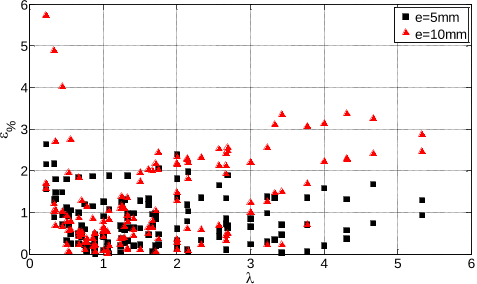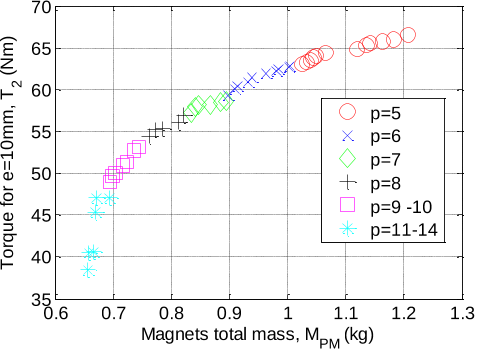




Did you find this useful? Give us your feedback
![Fig. 7 Axial flux magnetic coupling prototype [11],[12].](/figures/fig-7-axial-flux-magnetic-coupling-prototype-11-12-4zwb9g07.png)

![TABLE I DIMENSIONS OF THE CONSTRUCTED MAGNETIC COUPLING [11],[12]](/figures/table-i-dimensions-of-the-constructed-magnetic-coupling-11-6cs62iwn.png)














3 citations
2 citations
...Magnetic couplings are classified as electromagnetic slip coupling (EMSC) [10], [11] and permanent magnetic coupling [12], [13] according to different ways of excitation....
[...]
2 citations
2 citations
...[17] proposes a new analytical formulation using a subdomain method and optimises the torque density using GA (Genetic Algorithms)....
[...]
...Recently, [18] proposed what was called as ”ideal” axial and radial magnetic couplings, and their torque density analyses are based on a new analytical formulation [19], including the curvature effects that were neglected in [17]....
[...]
...Nowadays, they are more commonly referred to as radial and axial [17], respectively....
[...]
157 citations
...Usually, the problem is solved under a two-dimensional (2-D) approximation which, in some situation like in axial field couplers, results in a 30% overestimation of the torque compared to three-dimensional (3-D) FE prediction [10]–[12]....
[...]
122 citations
...For simplicity, let us consider, in free space, an electrostatic uniform surface charge density σs (C/m2), subjected to an electric field E [16]....
[...]
...From the magnetostatic point of view, it is usual to use an equivalent magnetic surface charge σm in A/m [7], [11], [14]– [16]....
[...]
117 citations
...Axial flux magnetic coupling prototype [11], [12]....
[...]
...An analytical formula which is derived in [11] using a 2-D analytical model (mean radius model and first harmonic approximation) is given by (21)....
[...]
...7) (more details can be found in [11] and [12])....
[...]
...In [11] and [12], the authors have constructed a prototype axial field coupling and developed a 2-D formula to evaluate the torque....
[...]
...From the magnetostatic point of view, it is usual to use an equivalent magnetic surface charge σm in A/m [7], [11], [14]– [16]....
[...]
83 citations
...3-D analytical models for magnetic couplings have been proposed in the literature [6], [13] and [14]....
[...]
68 citations
...3-D analytical models for magnetic couplings have been proposed in the literature [6], [13] and [14]....
[...]
...From the magnetostatic point of view, it is usual to use an equivalent magnetic surface charge σm in A/m [7], [11], [14]– [16]....
[...]